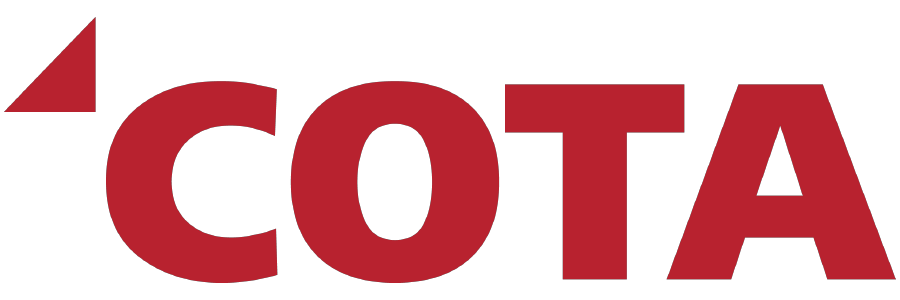Doing the Job of Getting People to Work
In 2018, COTA began to search for additional innovative ways to improve the quality and scope of paratransit service while controlling costs.
The Central Ohio Transit Authority (COTA) is the regional public transit provider for greater Columbus and Central Ohio. In 2019, its 325 buses and paratransit fleet provided more than 19 million trips throughout a service area boasting a population of more than 1.2 million residents and spanning an area of 562 square miles centered around the City of Columbus and parts of Franklin, Delaware, Union and Licking Counties.
COTA’s mission is to “provide solutions that connect people to prosperity through innovation, dedication and teamwork.” UZURV is proud to play a part in supporting that mission.
Core Outcomes
Proven cost benefit
-7%
Cost reduction vs. traditional Mainstream
Highly rated by riders and community
Net Promoter Score Across All Markets Up To
92
Scalable and flexible during times of change
3x
Ridership growth even during COVID
The Challenge – Balancing Cost and Service
In Columbus, COTA’s Project Mainstream provides ADA-mandated origin to destination transportation for eligible people with disabilities. By law, Mainstream has continued to operate in all areas when and where COTA bus service operates.
Over the years, the areas and times during which bus service operates have evolved, and in some instances COTA has reduced service to better align with customer needs.
Rather than cutting Mainstream service to match only where bus services are provided, COTA has continued to operate Mainstream in a much larger area in order to enable Mainstream riders with disabilities (many of whom have few, if any, other transportation options) to continue traveling throughout the region for work, school, shopping, medical services and other essential and non-essential reasons.
The decision to provide paratransit in areas where it is not required reflects COTA’s values. It also created a number of challenges for COTA, including the financial challenge of paying for additional paratransit and the ongoing operational challenges of maintaining a larger fleet and recruiting and retaining the larger number of drivers needed to keep service going.
Put simply, COTA needed to develop a strategy for providing an essential but non-mandated service in a way that would be more financially and operationally sustainable over the long term.
Given the need to launch service quickly and with the understanding that the service would probably evolve over time, COTA worked with its Project Mainstream provider, Transdev, to select a qualified on-demand transportation provider to deliver the Mainstream
on Demand service. Both organizations agreed that UZURV, the Adaptive Transportation Network Company (TNC), would be the best choice for operating Mainstream on Demand. UZURV’s Adaptive TNC presented several advantages over the two dominant traditional TNCs:
- Specific interest in working with transit agencies and sharing data
- Provided solutions for wheelchair transportation, leveraging local providers through the UZURV mobility platform
- Call center for booking (no smartphone required) for rider accessibility
- Met all FTA Drug & Alcohol testing rules, COTA driver vetting, and insurance requirements
The Pilot
Based on the early experiences of other transit agencies who were implementing on-demand paratransit and opt-in, rider choice paratransit pilots in the late 2010s, COTA determined that it would implement an on-demand paratransit pilot program that would offer on-demand paratransit to Project Mainstream riders taking same day trips and those traveling in areas where ADA paratransit is not required.
The pilot began service in May 2019 under the name “Mainstream on Demand.” Service parameters were as follows:
- Fully accessible
- Travel anywhere in Franklin County with >2 hours’ notice, no monthly/daily trip limit
- Direct origin to destination, no shared ride requirement
- Customer fares: $1/mile with a $5 floor, uncapped (regular service: flat $3.50)
- Only eligible paratransit customers may use the service
COTA’s goals for the program pilot were simple... but not easy:
- Design a program that could be scaled up or down, depending on daily vehicle and driver need
- Support the different policies, procedures and fare structures of different organizations purchasing trips through COTA’s Project Mainstream service
- Increase mobility options for Project Mainstream riders and improve the customer experience.
- Deliver service at a cost that would maintain or reduce the average cost per trip for Project Mainstream services.
Pilot Results
Since launching service in May of 2019, the program has gained in popularity with riders and with COTA staff. In fact, COTA staff recently worked with the local Veteran’s Administration to make service available to clients of the Veterans Administration. Other highlights include the following:
- During the first six months, demand for UZURV provided trips grew by more than 250% growing from ~1,000 trips in May 2019 to ~2,500 trips within 6 months
- On-time performance has routinely exceeded 98%, consistently exceeding “core” Mainstream service
- The program has earned a very high customer satisfaction and consistent praise from the community.
- A 2019 cost per trip (minus fare revenue): $33.40 “core” versus $30.83 On-Demand, or ~7% less than “core” service per trip cost.
From Pilot to Permanent
Based on pilot outcomes, COTA decided to make the program permanent
in October 2019. In addition to the pilot services, several additional features were added to the program:
- The >2 hour advance notice was reduced to >1 hour
- UZURV added Lyft as an overflow partner; choice is at customer’s discretion
Four Months Later - Service Impacts of The Pandemic
COVID hit just four months after the pilot phase ended.
Like many agencies, COTA suspended fare collection. As a result, the price difference was eliminated between Mainstream services and triggered a massive customer shift to On-Demand. UZURV was able to accommodate a 300% demand increase over 6 months without reduced performance.
During the same period, “core” Mainstream productivity declined and cost per
trip ballooned from $33.40 to $52.80. Comparatively, UZURV’s Mainstream
On-Demand cost per trip only increased from to $30.83 to $34.13, despite
the rapid 3x growth of volume on Mainstream On-Demand.


